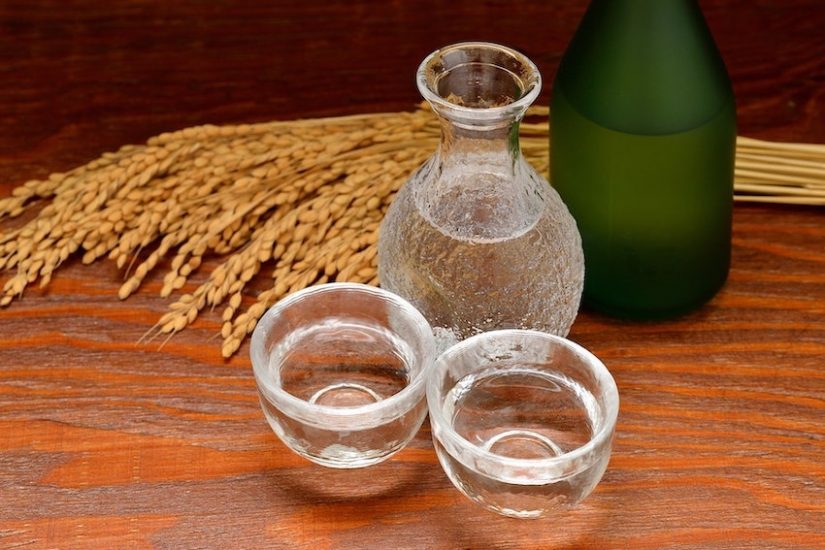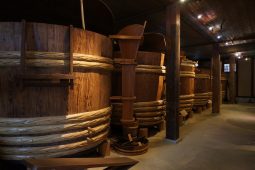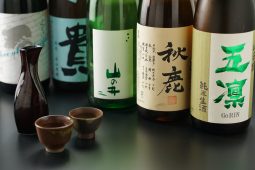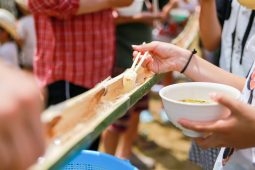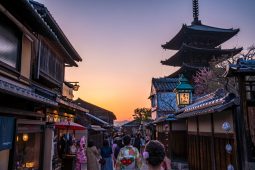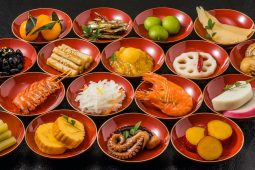Sake is not wine, nor is it beer. It is its own thing. However, there are some ways in which these drinks, each with its own long history, are quite similar. One way is how sake has developed a certain characteristic for the various regions in which it’s made. Many people, inside the sake world and out, compare sake’s regional variations to the terroir concept of wine, tying sake to the tangible climate and intangible culture of a region as a unique expression of the locality. Others say it’s more like beer, in which local brewers simply make use of local ingredients and express their own take on tradition to naturally evolve a unique style that belongs to the brewing culture alone. Which is true? Neither? Both? Wiser heads than mine haven’t found an answer, so I’m not even going to try. What I will say is that regionality in sake can only be described in broad terms and that it is at best a rule of thumb, but it can still offer some insights into what can be found inside those bottles.
The North to South Trend
From a broad view, there’s a gradual change in flavor profile from north to south. Northern sake has a reputation for light, clean flavors that are described with the term 淡麗辛口 tanrei karakuchi, which translates as “light and dry. “These sakes have a clean, short finish and lean towards mild bitterness. The most archetypical tanrei karakuchi sake is that of Niigata, one of Japan’s most prominent sake brewing prefectures, but sake from Hokkaido and Aomori also follows this trend.
As you move south along the Japanese archipelago, sake grows richer and more full-flavored. Both sweetness and amino-acid savoriness, or umami, crank up to create bigger, bolder sakes.By the time you reach Kyushu, most sake is quite richly flavored. (Okinawa only has a single sake brewery, and I have never tried their sake, so I’m not sure what it’s like. )
Again, this is a rule of thumb. Breweries can and do have their own individual styles, local regions can develop independently, and some breweries will even differentiate within their product lineup between traditional local styles and more exotic ones.
Standout Areas
Within that overall north to south trend, there are local regions that have a reputation for a particular style of sake.
Kobe (Nada Gogo)
The region within Kobe is known in sake world as the Nada Gogo (five villages of Nada). The sake brewing industry here is not only among the oldest in Japan, but also the most famous and by far the most productive. This region is packed with brewers that have been in business for hundreds of years, and many of them are now juggernauts. This was all built on one thing; the Nada style of sake. The region is blessed not only with the perfect climate for growing sake rice, the cold winds coming off the mountains also help cold fermentation, and the groundwater also has a unique mix of minerals that lend a particular character to the sake. The result is a rich, mellow sake with a crisp aftertaste that is often called otokosake (masculine sake).
Hiroshima
The Saijo area of Hiroshima prefecture is another historical sake brewing region. The history doesn’t go back as far as Nada, but has established a very good reputation all the same. It is often considered one of Japan’s most important regions for sake, in fact. It stands in direct opposition to Nada, however, in that its water is on the softer, gentler side and was thus historically considered unfit for sake brewing.
Then, a researcher named Kiyoshi Hashizume began working at Kamotsuru Shuzo brewery and investigated brewing styles that would fit Saijo’s water. The result ended up being the key to what we call ginjo sake now: slow, low temperature fermentation. The lack of mineral content in the water means that the yeast needs special conditions to flourish, and these conditions lead naturally to the sweeter, more aromatic and delicately flavored sakes that are so popular nowadays.
Kyoto
Kyoto is quite near to Nada, but the sake couldn’t be more different. Like Hiroshima, Kyoto has softer water than Nada, but it has a mineral content that is still conducive to sake brewing. The sake of Kyoto is known as Fushimi sake, and it has a delicate mellowness that is often described as feminine onnasake as opposed to Nada’s otokosake.
While Nada is quite dominant in the market, Kyoto is home to Gekkeikan, which is a massive brewer (currently either the biggest or second biggest in the world), so its position is certainly strong.
Other Regions
There are, of course, plenty of other areas that are unique and worth checking out, if not as major as those three.
Okayama, Fukuoka, Shimane, Kochi, Akita and Fukushima all have strong styles and excellent sakes that make investigation worthwhile.


